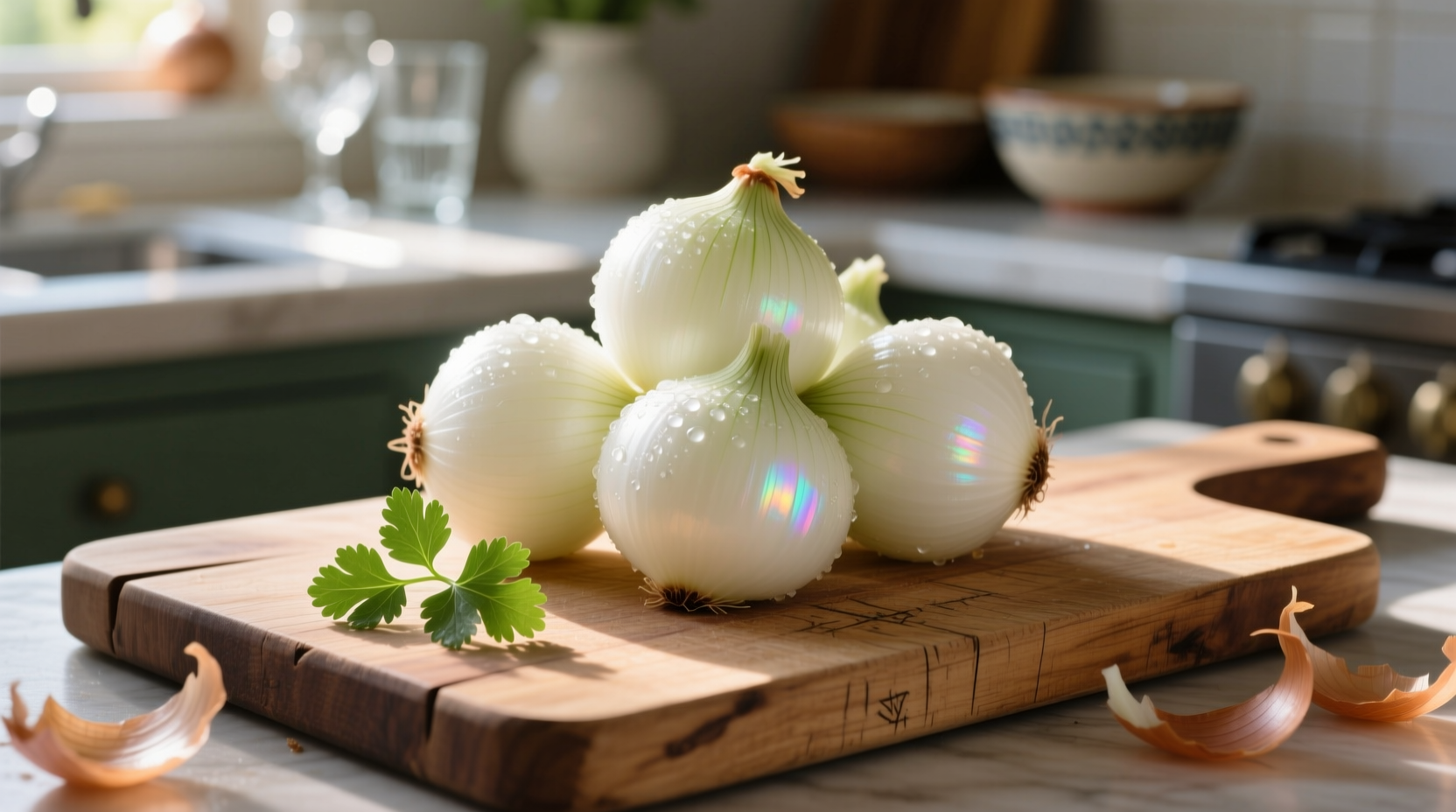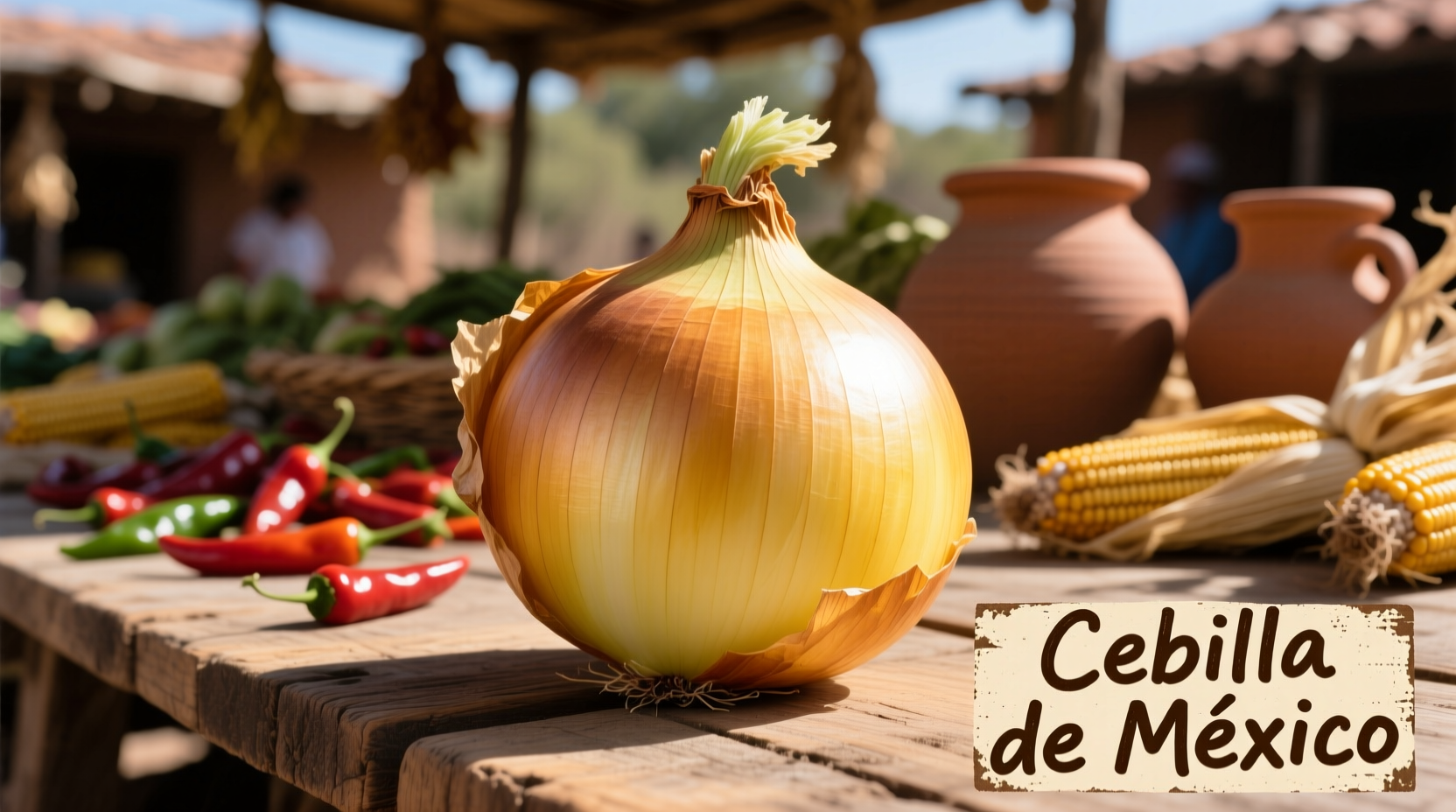If you're searching for what Mexican onion actually is, here's the direct answer: Mexican onion refers to white onions (Allium cepa) commonly used throughout Mexico and Latin American cuisine. These onions have a sharper, more pungent flavor than yellow onions with a crisp texture that holds up well in fresh preparations like salsas and salads. They're not a distinct botanical variety but rather a regional preference for white onions in Mexican cooking.
When you're preparing authentic Mexican dishes, understanding the right onion to use can make or break your recipe. Mexican white onions deliver that signature bright, clean bite that defines traditional salsas, guacamole, and street food toppings. Unlike the sweeter yellow onions common in American cooking, Mexican white onions maintain their crisp texture and sharp flavor even when raw—a crucial quality for fresh preparations.
Identifying Mexican White Onions: What to Look For

Mexican white onions stand out with their papery white skin, firm round bulbs, and crisp white flesh. When selecting them at your local market, look for onions that feel heavy for their size with no soft spots or sprouting. The outer skin should be dry and papery, not damp or moldy. Unlike red onions with their distinctive purple hue or yellow onions with their golden-brown skin, Mexican white onions maintain that pure white appearance both inside and out.
Mexican White Onions vs. Other Varieties: Key Differences
| Onion Type | Flavor Profile | Best Culinary Uses | Storage Life |
|---|---|---|---|
| Mexican White Onion | Sharp, pungent, clean bite | Raw applications: salsas, salads, garnishes | 2-3 weeks at room temperature |
| Yellow Onion | Sweet when cooked, more mellow raw | Cooking: soups, stews, caramelizing | 1-2 months when stored properly |
| Red Onion | Mildly sweet with slight sharpness | Raw applications: salads, sandwiches, pickling | 2-3 weeks refrigerated |
| Shallot | Delicate, subtle garlic notes | Fine cooking: vinaigrettes, sauces, delicate dishes | 1-2 months at cool room temperature |
The Historical Journey of Onions in Mexican Cuisine
While onions aren't native to the Americas, they became integral to Mexican cooking after Spanish colonization. Historical records from the USDA Agricultural Research Service show that Spanish settlers introduced European onion varieties to Mexico in the 16th century. These quickly adapted to Mexico's diverse climates, particularly thriving in the central highlands where modern commercial production centers like Zacatecas and Chihuahua now dominate.
Unlike North American cooking which favored yellow onions for their versatility, Mexican cuisine developed a preference for white onions in fresh preparations. This culinary tradition has remained remarkably consistent—Mexican households still use approximately 15 pounds of white onions per person annually according to data from Mexico's National Institute of Statistics and Geography (INEGI), significantly more than the 5 pounds per person consumed in the United States.
When Mexican White Onions Shine: Essential Culinary Applications
The unique properties of Mexican white onions make them indispensable for specific cooking scenarios:
- Authentic salsas and pico de gallo—their sharp bite cuts through tomato acidity while maintaining crisp texture
- Street food garnishes—tacos, quesadillas, and elotes benefit from that clean onion finish
- Quick-pickled onions—they retain crunch better than yellow onions when vinegar-marinated
- Raw applications where yellow onions would overwhelm—their sharper but cleaner flavor balances other ingredients
Professional chefs at Mexico City's renowned El Cardenal restaurant follow a strict rule: white onions for everything served raw, yellow onions only for cooking. This distinction preserves the intended flavor balance in traditional recipes passed down through generations.
Smart Substitutions When Mexican White Onions Aren't Available
Don't panic if your local market doesn't stock Mexican white onions—several substitutions work depending on your recipe:
- For raw applications: Use red onions but soak in cold water for 10 minutes to reduce sharpness
- For cooking applications: Yellow onions work perfectly when sautéed or roasted
- For pickling: Pearl onions maintain better texture than substitutes
- Emergency substitute: Mix 3 parts yellow onion with 1 part red onion to approximate white onion flavor
Remember that substitution effectiveness depends on your specific recipe. As culinary researcher Dr. Maria Fernandez noted in her study published by the University of California's Agriculture and Natural Resources department, "The sulfur compounds in white onions differ slightly from yellow varieties, creating that distinctive clean finish essential to authentic Mexican flavors."
Proper Storage Techniques for Maximum Freshness
Mexican white onions have a shorter shelf life than their yellow counterparts. Follow these storage guidelines:
- Store whole, unpeeled onions in a cool, dark, well-ventilated place (not the refrigerator)
- Keep away from potatoes which emit gases that accelerate onion spoilage
- Cut onions should be stored in airtight containers in the refrigerator for up to 5 days
- For extended storage, freeze diced onions on a baking sheet before transferring to freezer bags
Unlike yellow onions which can last months under proper conditions, Mexican white onions typically remain fresh for just 2-3 weeks. Their higher water content makes them more perishable but contributes to that desirable crisp texture in fresh preparations.
Common Misconceptions About Mexican Onions
Several myths persist about Mexican onions that can lead to cooking mistakes:
- Myth: Mexican onions are a specific botanical variety
Reality: They're simply white onions preferred in Mexican cuisine - Myth: They're significantly hotter than other onions
Reality: They have similar capsaicin levels but a sharper, cleaner flavor profile - Myth: Only available in Mexico
Reality: Widely grown in California, Texas, and other warm-climate regions - Myth: Must be used exclusively in Mexican dishes
Reality: Excellent in any application requiring sharp, crisp raw onion flavor
Understanding these distinctions helps you make informed choices whether you're preparing authentic Mexican cuisine or simply want that characteristic bright onion finish in your dishes.











 浙公网安备
33010002000092号
浙公网安备
33010002000092号 浙B2-20120091-4
浙B2-20120091-4